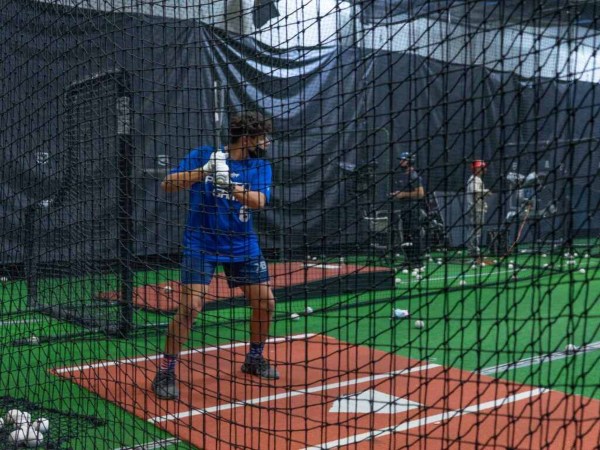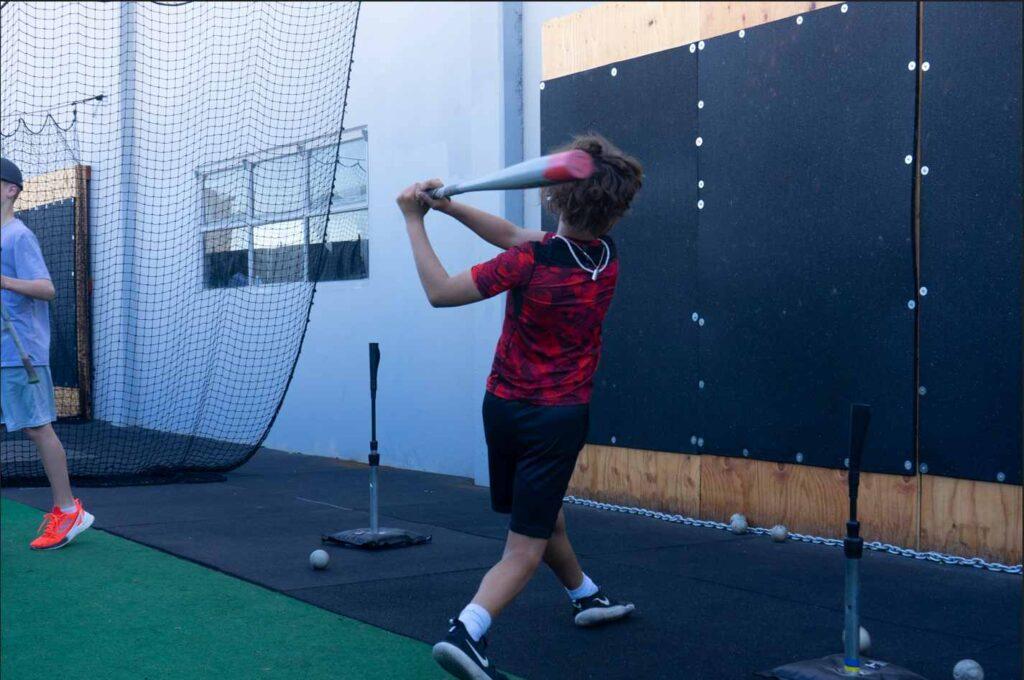How to Analyze Baseball Swing Mechanics in 15 Steps
Learn How to Swing a Baseball Bat in Morgan Hill, CA
It takes power, velocity, and accuracy to swing a baseball bat accurately and hit the ball in the blink of an eye. A batter connects with the ball as their muscles, joints, and connective tissue contractions reach their hands. Kinetic Performance Institute analyzes the baseball swing mechanics of Morgan Hill, CA, players to help them reach optimal performance. We’ll help you understand the 15 steps through the stride and swing phases of hitting a baseball. Contact us to learn more about our baseball swing programs.
Baseball Hitting Mechanics – Stride & Swing Phases
The Stride Phase analyzes a baseball player’s swing from the setup to the end when the player commits to the pitch. The Swing Phase starts when the front leg blocks at the heel plant, and the player’s body accelerates its rotation. When the player contacts the ball, the phase is over. It’s essential to understand how the components of a player’s body work together to create the perfect stride and swing for them. Our baseball training program includes analyzing a player’s stride and swing to help them make the necessary adjustments to develop a more powerful hit.
Stride Phase

- Stance: A stance, or setup, is unique to each player. A stance can be open, narrow, wide, closed, or parallel. The pre-swing position won’t affect the player’s ability to adjust to unique pitches.
- Excessive Negative Weight Shift: Excessive negative weight shift happens when a hitter’s weight shifts during their load to the outside of the rear foot. Even though most players have a unique style, all players must position their weight to the inside of their feet to prepare themselves to move forward. It can be challenging to consistently and positively move into a toe touch during this phase.
- Poor Rear Hip Load: A player’s load starts by coiling around the rear hip, where it then loads and fires around the rear hip socket. This movement helps the hitter to stay balanced throughout the stride phase. The knees should stay inside the ankles and release the stored energy into a foot plant.
- Inability to Maintain Center of Mass: It’s essential to maintain positive posture and good balance throughout your stride. When a hitter maintains their center of mass, they can control the weight shift through the swing’s stride phase and ensure their upper body is in the perfect position to rotate with the pitch. If a player has too much of a weight shift, it can make it difficult to transition into the rotation to transfer power through the baseball.
- Lack of Linear Momentum: Lack of linear momentum happens when a hitter begins to spin around the back hip instead of correctly shifting their weight to the front side. This causes a lack of energy transfer, costing the hitter valuable bat speed.
- Lack of Independent Hands: Creating independent hands during the move forward helps the hitter maximize separation and have more time to make better decisions. A hitter must move their hands farther away from the pitcher as their body moves closer. When the hitter creates this stretch, they can generate a higher amount of power up the chain.
- High Elbow: A hitter with a lower level of scapular control will often start to substitute with a high elbow. This can lead the hitter to start to collapse their back elbow or push their upper extremities and cost them valuable swing time. It’s crucial that the batter has an appropriate scap load to let the upper body resist when the lower body fires.
- Losing the Barrel: Losing the barrel involves compromising the line of pull between the front arm and the bat. A batter loses the acceleration of the bat and costs themselves valuable bat speed. Anything that reduces the acceleration of the bat lowers a hitter’s batted ball velocity.
- Stride Length: The correct stride length depends on a hitter’s power, mobility, and strength. Many mature athletes are strong enough to use the benefits of a long stride, but younger athletes will drop their center of mass too low. Too short of a stride may compromise forward momentum going into the foot strike.
Swing Phase

- Inefficient Lead Leg Block: When a hitter has an inefficient lead leg block, they cannot adequately transition the ground reaction forces from the swing’s linear phase into rotation. All players must have flexion after the heel plant, even with the different degrees of knee flexion. The hitter’s power potential is negatively affected when the body is not in proper sequence.
- Poor Axis of Rotation: After blocking, the lower half starts to transfer energy. The player must have a stacked center of mass from the support’s base to the center of their hips and shoulders. Positive rotation must occur on a vertical axis to allow the bat to enter the hitting zone faster.
- One-Piece Swing: A one-piece swing happens when the swing’s two components move together simultaneously. There is a point between the heel plant and foot strike when the player’s shoulder line and hips reach peak disassociation. As the core tightens, the necessary torque is created to allow the player to unwind from their swing during the rotational phase.
- Push: Improper pushing movement may cause a hitter to lose the ability to get on the pitch’s plane and reduce their bat speed. This happens when a hitter uses their rear arm to push the knob toward the zone. That bat should be whipped through the zone with bone hands while the back elbow is connected instead of using the rear arm.
Contact Kinetic Performance Institute Today
Kinetic Performance Institute in Morgan Hill, CA, helps young baseball and softball players develop their skills and correctly swing a bat. We use some of the top baseball swing analyzers to improve your swing. Our hitters wear and are assessed with Blast Baseball Bat Sensors, and we utilize Trackman and Hittrax to track batted ball metrics. With our state-of-the-art training facility and assessments, KPI has helped countless players take their swing to the next level. Reach out to our team today to learn more about taking your player’s baseball swing to the next level.
